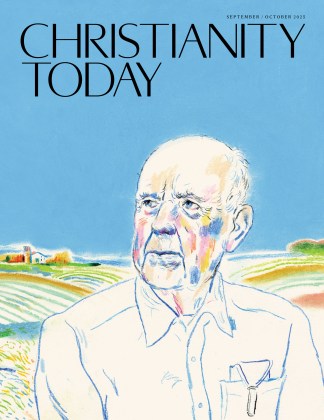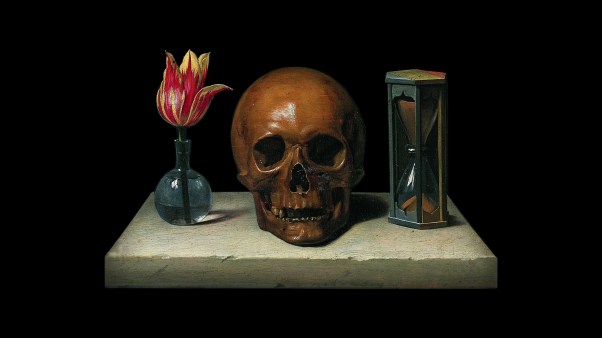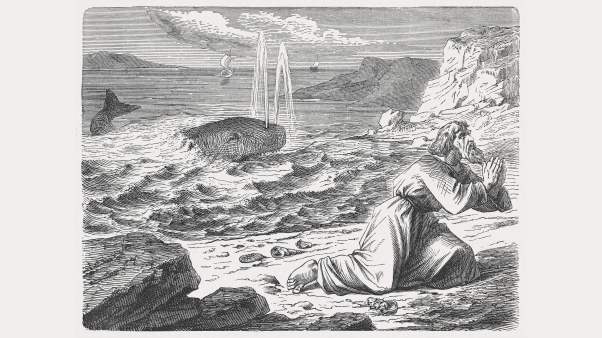One of the earliest unofficial outlines of church doctrine, The Didache, made it clear that Christians should not practice abortion or expose newly born infants to die. In explaining what it meant to love one’s neighbor, it said, “Commit no murder, adultery, sodomy, fornication, or theft. Practice no magic, sorcery, abortion or infanticide.” On these ethical issues, Christians were unanimous.
But other practical issues caused division in the church or required church discipline. When we think of heresy in the early church, we usually think of lofty theological debates over the Trinity and the deity of Christ, but pastors also had to draw lines on a number of practical concerns.
Living with “Spiritual Sisters”
Some monks and nuns in the early church believed they could live together. Monks wanted to be free of housekeeping duties, which nuns (whom they called “spiritual sisters”) could perform; the monks could then spend more time in contemplation and in service to others. Because of their vows, they felt they could avoid sexual temptation.
This practice may have existed as early as the second century. Though it was officially forbidden by church councils at Elvira, Ancyra, and Nicea in the early 300s, it existed long after these prohibitions.
Many church fathers preached against it. Jerome (342–420) said many of these women hid their pregnancy under loose clothing, and he spoke of abortion among these “virgins.” John Chrysostom (347–407) pointed out candidly that many of the spiritual sisters became spiritual mothers!
Deathbed Baptisms
Some early Christians believed that sins committed after baptism either could not be forgiven or would exact a costly penance. Thus many Christians put off baptism until just before death and lived most of their lives on the margin of the church.
Pastors steadily criticized this practice as perpetuating spiritual infancy. Not only could one inadvertently die before being baptized, Chrysostom argued, baptism was not a time of sadness before impending death. It was, instead, a time of joy, the beginning of a new life of faith.
In speaking to catechumens, converts who were about to be baptized, he said, “I not only count you blessed but I praise your good will, because, unlike men of laxity, you do not approach baptism at your final gasp.… They receive baptism in their beds, but you receive it in the bosom of the common mother of us all, the church; they receive baptism amidst laments and tears, but you are baptized with rejoicing and gladness; they are groaning, while you are giving thanks; their high fever leaves them in a stupor while you are filled with an abundance of spiritual pleasure.”
In spite of such strong teaching, another century passed before the practice died out.
Soldiers in Christ
On some matters, such as whether Christians should serve in the military, the early church’s attitude underwent a change.
In the first three centuries, it’s difficult to find evidence for Christian participation in the military. Most Christians seem to have accepted Tertullian’s (c.160-c.225) view, which he expressed in On Idolatry and On the Crown: “The soul cannot serve two masters, God and Caesar.” He acknowledged the validity of Israel’s military exploits before Christ and the sincerity of the repentant soldiers who came to John the Baptist, but he concluded, “The Lord, by taking away Peter’s sword [in the garden of Gethsemane] disarmed every soldier thereafter.”
After the conversion of Emperor Constantine, however, some Christians began to disagree.
Eusebius of Caesaria (c.260–c.340), the church historian, in his oration, On Praise of Constantine, called Constantine “the Savior’s friend.” He considered Constantine a fulfillment of God’s promise to Abraham to bless the nations of the earth and thus implied that to serve in Constantine’s government or army was to serve God.
On the other hand, the Council of Nicea still required churches to discipline former soldiers who, having left the military because of their Christian conversion, then chose to return to it.
The view that eventually prevailed was expressed by Basil the Great (c.330–379), leader of the churches in Cappadocia (in modern Turkey): “I have become acquainted with a man who demonstrates that it is possible even in the military profession to maintain perfect love for God and that a Christian ought to be characterized not by the clothes he wears but by the disposition of his soul.”
Calendar Heresy
For the first seven centuries after the birth of the church, Christians differed about how to determine the date of Easter. Believers from Asia Minor believed it should be celebrated on a fixed date: the fourteenth day of the Jewish month of Nisan, to correspond with the Jewish feast of Passover. In particular, these Christians thought Easter could be celebrated on any day of the week. They were called Quartodecimans, from the Latin for “fourteenth.”
The majority of Christians, however, insisted on celebrating Christ’s resurrection on a Sunday, the day he rose from the dead. They calculated Easter in the same way but put it on the Sunday following the fourteenth day of Nisan.
Other groups chose other dates still, and the result was a mess. Bishop Ambrose of Milan (c.339–397) commented in a letter that in A.D. 387, Easter was celebrated on March 21 in Gaul (modern France), April 18 in Italy, and April 25 in Egypt! The differences so troubled the bishops at the Council of Nicea (A.D. 325) that Quartodecimans were called “heretics.”
Unity in the Mediterranean world came in the fifth century when the churches all began using the Egyptian method of calculation: Easter was the first Sunday after the first full moon after the spring equinox.
The controversy arose again in the early medieval era in Celtic churches and in Gaul. Not until the early 800s was there complete agreement in the West.
Robert Krupp is a librarian at Trinity Evangelical Divinity School, Deerfield, Illinois. He is author of Shepherding the Flock of God: The Pastoral Theology of John Chrysostom (Peter Lang, 1991).
Copyright © 1996 by the author or Christianity Today/Christian History magazine.Click here for reprint information on Christian History.










